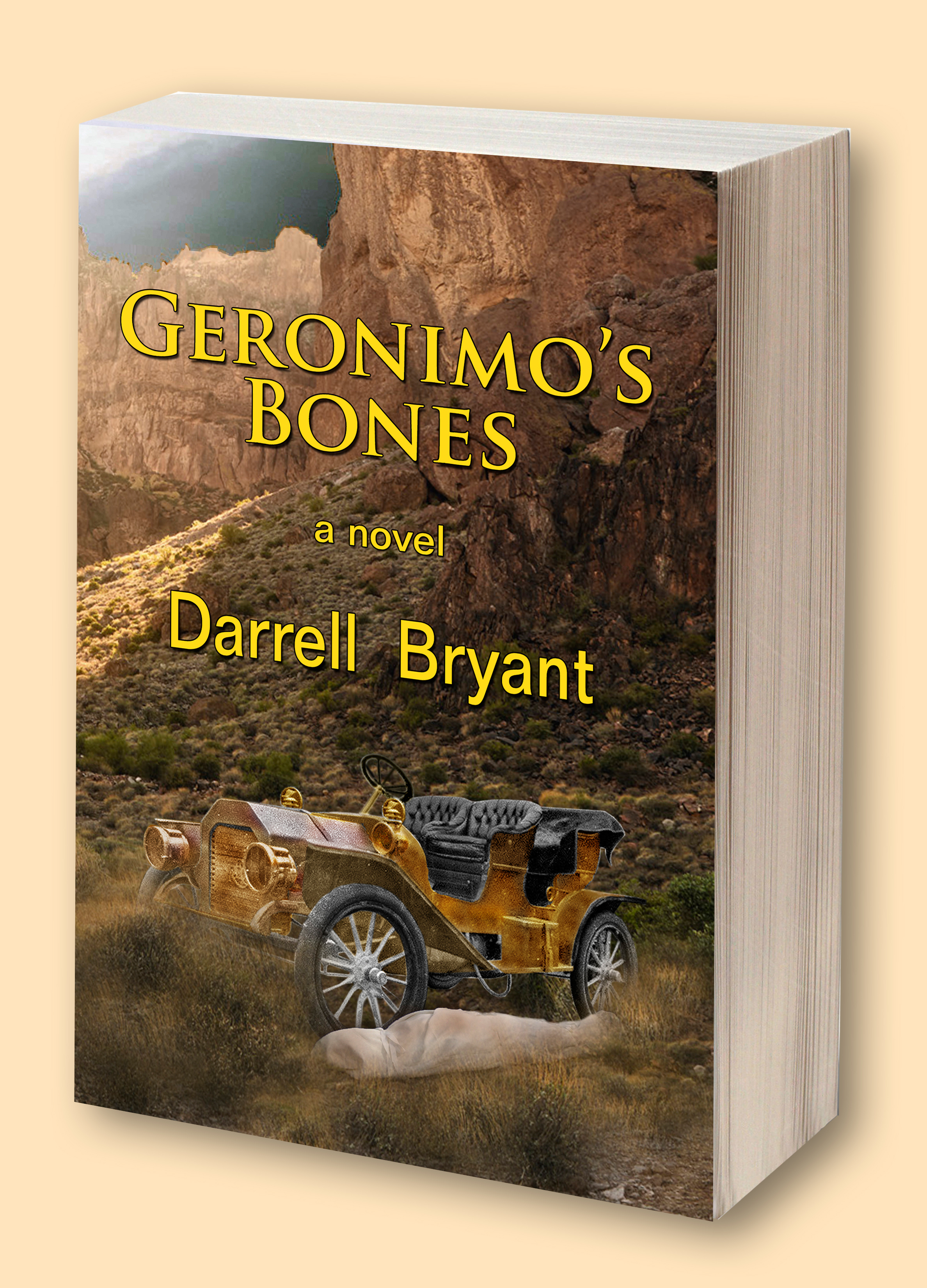by Tosh McIntosh
Kirkus Reviews has just published their review of Darrell Bryant’s debut novel Geronimo’s Bones. According to their guidelines, the review can now be published elsewhere under the following conditions:
- All excerpts must be attributed to “Kirkus Reviews” in italics, and industry standard best practices for proper excerpting must be followed. These practices include, but are not limited to, the following guidelines:
- If words are omitted from a quote, ellipses must be inserted in their place.
- No words may be added to the review.
- The integrity of the review may not be altered.
What follows is the review in its entirety. If you are familiar with Kirkus Reviews, the absence of ellipses is relatively unusual, because it means the review contained nothing the author wishes to extract so you don’t get to read it.
As with most Kirkus Reviews, it starts with a short opening paragraph that provides a concise overview of the story and the genre. The second paragraph presents a synopsis that lasts until about halfway through when the meat of the review begins with, “For a story that’s . . .” From here to the end of the review, we are treated to words of the kind that any author would love to read in an independent evaluation of their novel.
The bottom line is that Darrell Bryant did it right, and here’s the proof:
A Native American warrior journeys through the towns, train depots, and wilds of the early-20th-century West in this debut historical novel.
Young Chaco only knows the prisoner-of-war camp in Fort Sill, Oklahoma, where he hears stories about his people’s old ways at the knee of his uncle, the famed Apache chief Goyaa?é, known to whites as Geronimo. But Chaco is soon forcibly taken to an “Indian school” in Pennsylvania—leaving behind Goyaa?é; his adoptive mother, Aná; and his sister, Bui. He joins the Marines after he graduates, and during a stint in Cuba fighting the 1906 Pacification Campaign, he receives terrible news: Goyaa?é is dead. Shaken, he returns to Fort Sill, where he cares for his aging mother and finds out that Bui has ended up in the local whorehouse. His mother also tells him Goyaa?é is actually his father and wanted his bones to be taken to the mountains he called home. Shortly after she delivers this revelation, she dies. Chaco is filled with a steely resolve: to break Bui out of the brothel (owned by an unscrupulous proprietor named Alton McDonnell) and to bring Goyaa?é’s bones to the mountains. His quest to do so will take all of Chaco’s tactical skill and courage—and a few daring car chases and shootouts—as the resulting manhunt draws lawmen from all over the region. For a story that’s equal parts rollicking adventure and a sensitive account of a Native American’s odyssey in a particular era, Chaco is an ideal protagonist: intelligent, battle-worn, quick on his feet, and occasionally philosophical (“As he stared at the young wolf, it occurred to him that the Indian school had never been about education. It had been about domestication”). Bryant also clearly depicts the extreme racism Chaco faces, which makes his successes all the more satisfying. The book is full of historical details, deftly deployed so that they heighten the action instead of impeding it: People hop on trains, cut telegraph lines, and wrestle with high-maintenance automobiles. Add in a few colorful, nuanced characters along the way, like the cancer-stricken, former Civil War surgeon dwarf Doc Kale, and the novel shines.
A thought-provoking tale about an Apache’s struggles as well as a rousing romp.
— Kirkus Reviews

